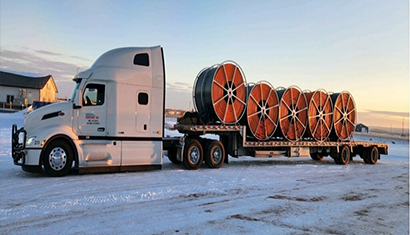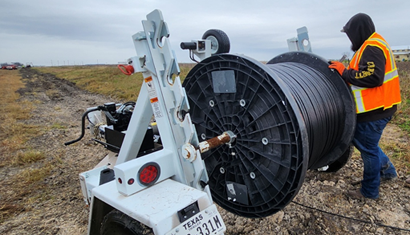We use these cookies to gather information about the way users interact with our website..We use this information to create reports and help us improve the website.
Read our Privacy Policy or Cookie Policy
AcceptTechnology & Installation
- Technology & Installation Method
- Direct Buried
- Trench
Direct Buried
Trench
Trench depth should be selected based on local regulations and conditions. Appropriate depths range from 30 to 80 cm. Factors such as ground frost and whether the area will be exposed to heavy machinery such as cars and trucks should be considered.
After excavating the trench, it is important to clear the trench of debris. Place a fine bedding of compacted soil or sand at the bottom of the trench to cover sharp or uneven objects. The bedding should be approximately 6 inches thick.
Once the duct is in place, it should be covered with another 15cm of the same material. If multiple ducts are stacked on top of each other, a 15cm buffer of fill material should be placed between each layer.
Place a warning tape on top of the final cover layer according to local regulations. This warning tape in combination with a locate wire will prevent breakage if future digging takes place.
All direct buried microducts from Knet have a built in tracer wire as an option for locating duct after the trench has been covered. Ensure that the metallic wire is connected together if sections of microduct are joined.
A simplified view of an excavated trench is shown below.








KNET Microduct Assemblies has been rigorously tested by Telcordia Technologies and found to be compliant to Telcordia GR-3155-CORE.




